Why do notebooks have stickers? The reason is not as obvious as it seems
The stickers are present in almost any laptop, with few exceptions. Now, it seems clear that they are there to identify the type of processor or graphics card that the computer, but really the thing goes further. In this article, we’ll take a look at why these stickers are there, and what you can do if you don’t want them on your computer. Let’s go there!
Index of contents
This is how stickers are on a current laptop
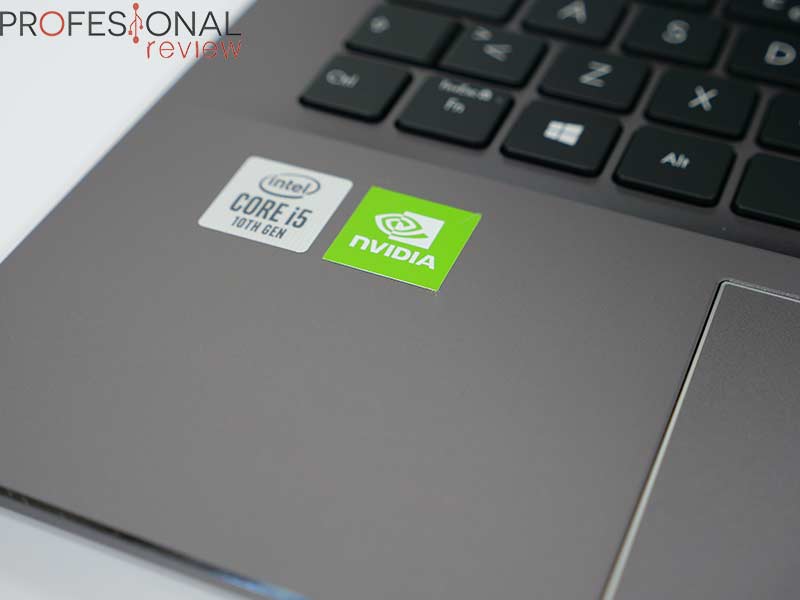 In most current laptops the same story is repeated as for many years: the most common is to have one from the processor manufacturer (Intel or AMD), and if you have an AMD or NVIDIA graphics card they are also quite common. these badges. These are generally located to the left or right of the laptop’s trackpad, in a position that does not interfere with our writing.
In most current laptops the same story is repeated as for many years: the most common is to have one from the processor manufacturer (Intel or AMD), and if you have an AMD or NVIDIA graphics card they are also quite common. these badges. These are generally located to the left or right of the laptop’s trackpad, in a position that does not interfere with our writing.
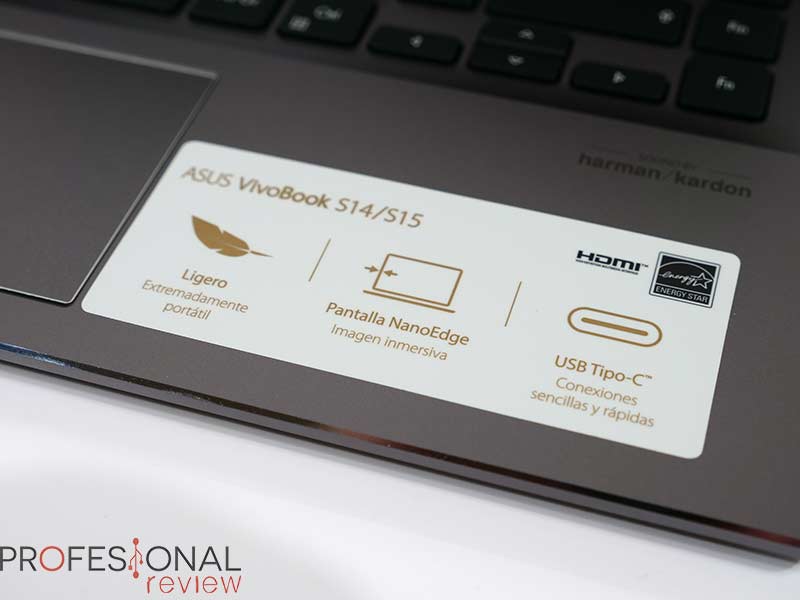 In addition, we can find other stickers such as those that belong to specific technologies, or even a sticker with a summary of the manufacturer’s specifications .
In addition, we can find other stickers such as those that belong to specific technologies, or even a sticker with a summary of the manufacturer’s specifications .
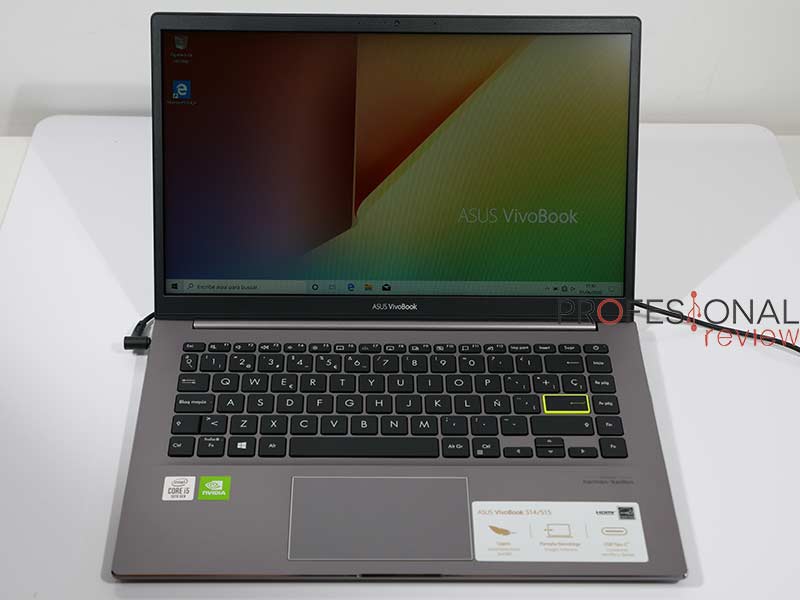 You can imagine that the stickers on a laptop are part of a true “million dollar industry”, in which the manufacturers of these little badges take millions and millions annually. Let’s bear in mind that practically any laptop has stickers identifying, at least, its CPU and GPU, perfectly visible.
You can imagine that the stickers on a laptop are part of a true “million dollar industry”, in which the manufacturers of these little badges take millions and millions annually. Let’s bear in mind that practically any laptop has stickers identifying, at least, its CPU and GPU, perfectly visible.
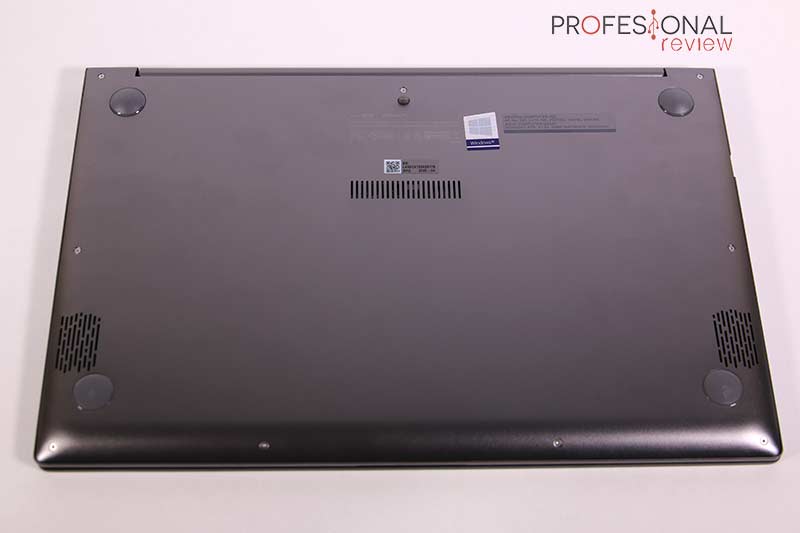 Let’s not forget the Windows sticker either, which we are going to find basically on any computer that has this operating system pre-installed, only that it has gone from being together with the other stickers to being placed on the bottom of the computer.
Let’s not forget the Windows sticker either, which we are going to find basically on any computer that has this operating system pre-installed, only that it has gone from being together with the other stickers to being placed on the bottom of the computer.
Now the question is, what are these stickers doing there, what purpose do they serve? There is an obvious reason, but let’s start with the one that really is the key, and that will surely surprise many.
Marketing, the reason there are stickers on a laptop
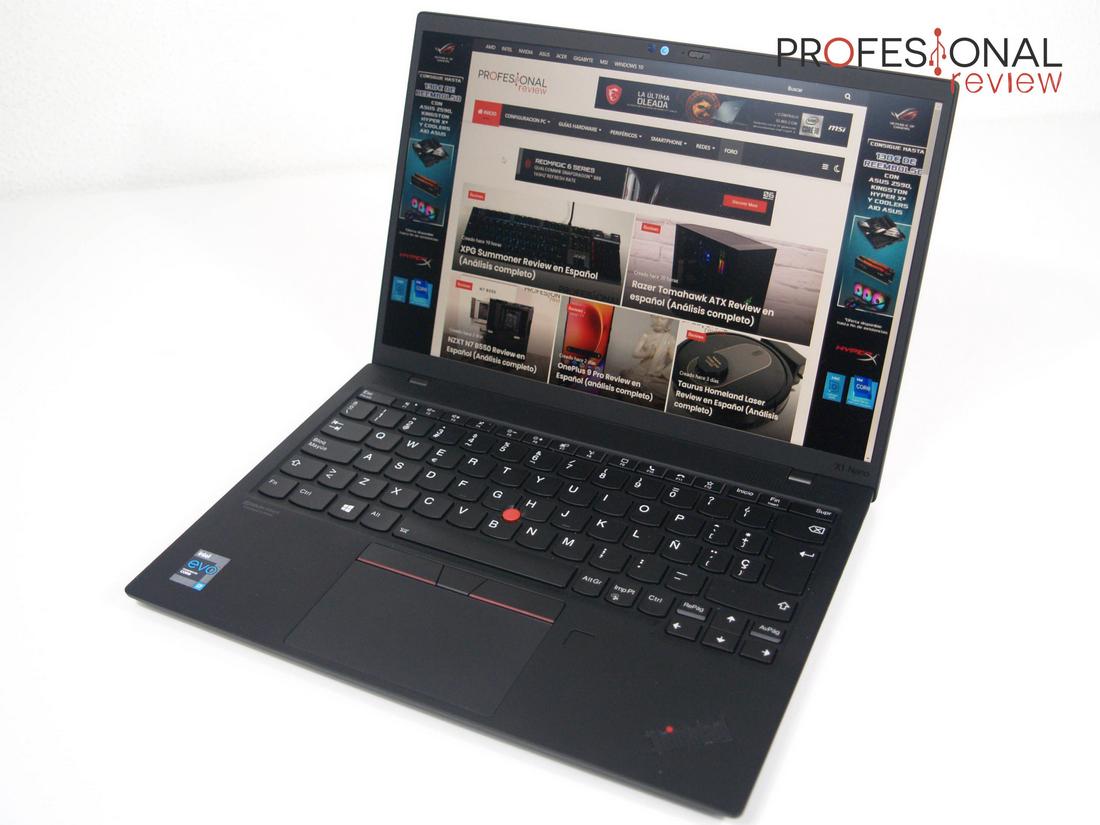
Actually, the reason why a laptop has stickers has to do with the agreements with the manufacturers that have the laptop brands. Companies such as AMD or Intel promote the existence of these stickers, through discounts to laptop brands, in addition to paying a part of their advertising in exchange for the company showing the stickers in their ads, or clearly indicating that they use a CPU or GPU of that brand.
Do you recognize the laptop ads where the product is featured first and there is an “Intel Inside” animation at the end? Well, the same thing happens with the stickers: the manufacturers give some publicity to AMD or Intel, in exchange for them to help with the marketing costs of advertising the PC.
Let’s not forget either the confidence that users can get to see that they are using products from recognized brands. As much as any laptop carries AMD or Intel, seeing their insignia there does not fail to provide a little more confidence in this regard.
Come on, we already have the great reason why the stickers are there: they pay off for the equipment manufacturer and increase confidence.
Higher-end, more expensive, sticker-less laptops
One of the best ways to test what we’re talking about is that most laptops without any stickers are high-end, or especially expensive. For example, although they have now abandoned Intel CPUs, in all their years of use we have never seen a MacBook with stickers, and at the same time they are quite expensive equipment.

Obviously, there are also examples from other brands, such as some of the Microsoft Surface. We see that they are all premium equipment, but not only that: they are quite special, since they are designed so that we consider them very different from the usual PCs, either because of their characteristics or solely because of their brand.
It seems that here the big question is that we find teams that do without stickers to maintain their own personality: Apple does not want us to think that a MacBook is an ordinary laptop, and having an Intel sticker on its chassis would be like saying “we are one more”. The manufacturers of the most premium equipment want to distinguish themselves from the competition in the maximum possible respects, and although we think that the stickers do not have a certain effect.
Stickers that really add value
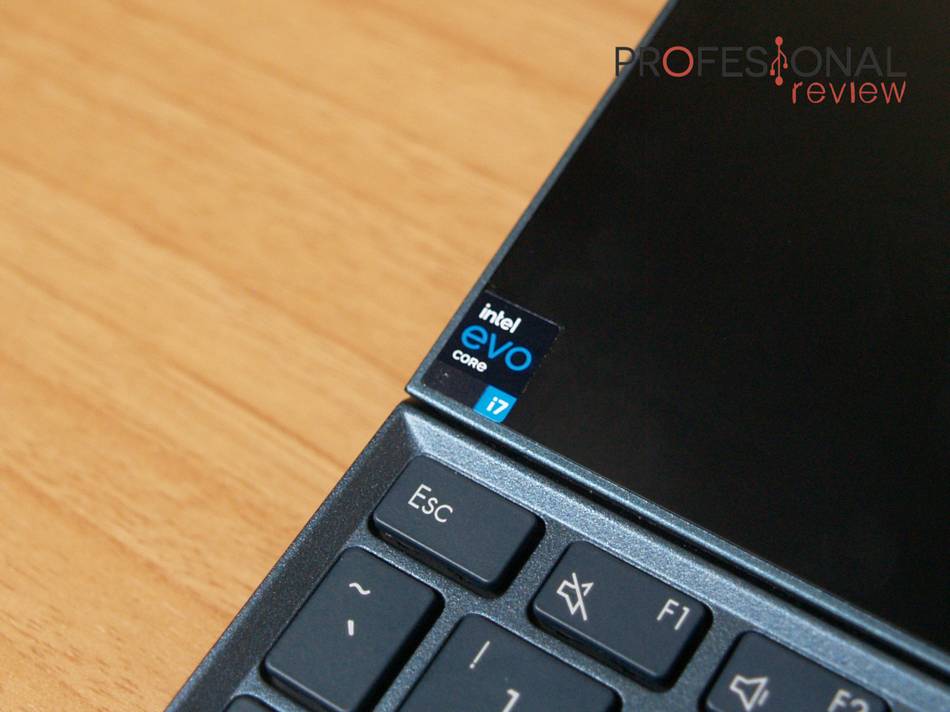 The truth is that, sometimes, a sticker represents much more than it seems, since significant improvements in the design have been necessary to be on that team. Let me explain: for example, to get the Windows 7 sticker, Microsoft required that the computer work with the 64-bit version. This accelerated the transition from 32-bit to 64, as manufacturers were forced to do so.
The truth is that, sometimes, a sticker represents much more than it seems, since significant improvements in the design have been necessary to be on that team. Let me explain: for example, to get the Windows 7 sticker, Microsoft required that the computer work with the 64-bit version. This accelerated the transition from 32-bit to 64, as manufacturers were forced to do so.
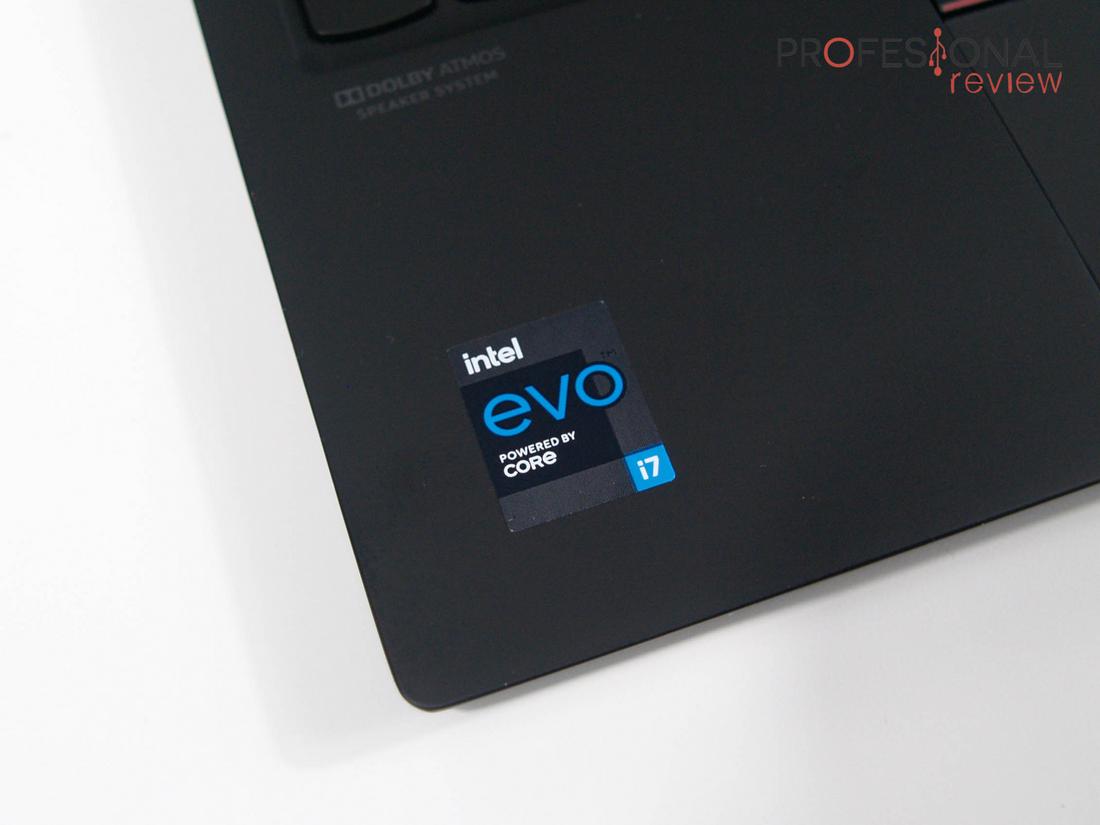 If we go to more recent examples, we can talk about the Intel Evo platform . This is a kind of “certification” that brands are interested in having in their ultrabooks, since it is a synonym of having a reliable computer, with efficient performance, good battery and that provides the best possible experience.
If we go to more recent examples, we can talk about the Intel Evo platform . This is a kind of “certification” that brands are interested in having in their ultrabooks, since it is a synonym of having a reliable computer, with efficient performance, good battery and that provides the best possible experience.
But of course, wearing that badge is not something that can be done that way because that way, but Intel imposes numerous requirements for it, in terms of battery life, available connectivity, performance, screen, RAM and CPU, user experience, etc. Thus, we can say that, although Intel Evo is just a sticker, it represents a lot of improvements in laptops, so it offers added value.
Identification of equipment parts, the second reason for laptop stickers
In this second point we go with the most obvious when analyzing the stickers of a laptop.
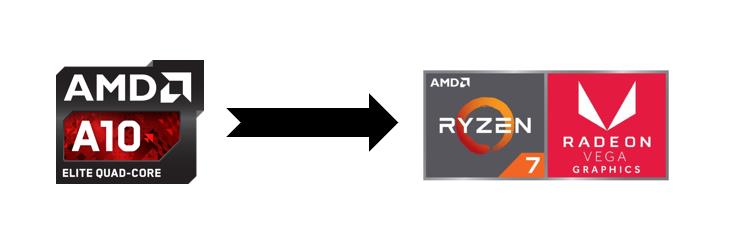 In addition, not only does it allow us to easily know what series of processor or graphics card the computer has, but we can also know which generation it belongs to, thus being able to deduce the year of the laptop’s launch.
In addition, not only does it allow us to easily know what series of processor or graphics card the computer has, but we can also know which generation it belongs to, thus being able to deduce the year of the laptop’s launch.
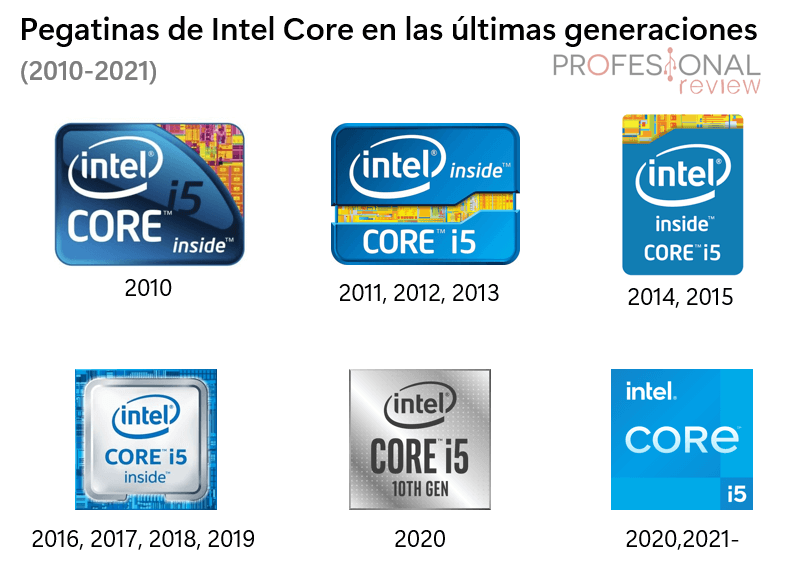 For example, we have made this example based on the sticker used by all Intel teams from 2010 to today, and we can see how we can very easily deduce the possible launch year of a laptop based on the sticker on its CPU. It is exactly the same with AMD and NVIDIA, although without a doubt the case of Intel is the most identifiable.
For example, we have made this example based on the sticker used by all Intel teams from 2010 to today, and we can see how we can very easily deduce the possible launch year of a laptop based on the sticker on its CPU. It is exactly the same with AMD and NVIDIA, although without a doubt the case of Intel is the most identifiable.
In summary, the stickers on a laptop provide you with quick and useful information about the type of parts used, although it is obviously a replacement for a super simple process, such as checking what parts your PC has for yourself.
Can I remove the stickers from a laptop? And get replacements?
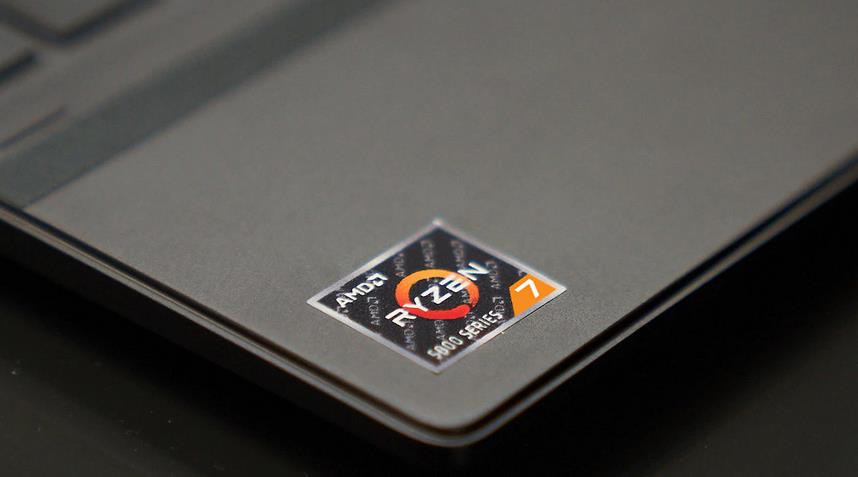 Here we have a big question: are stickers an aesthetic problem for a laptop or a virtue ? All this depends on the personal consideration of each one, and there are two opposite positions:
Here we have a big question: are stickers an aesthetic problem for a laptop or a virtue ? All this depends on the personal consideration of each one, and there are two opposite positions:
- The stickers add a lot to the computer, they are not only informative but they look great on the computer, especially if it is new, and they remind us how “good” the PC parts are.
- The stickers are aesthetically hideous, a hindrance to the laptop’s design, and should be removed entirely.
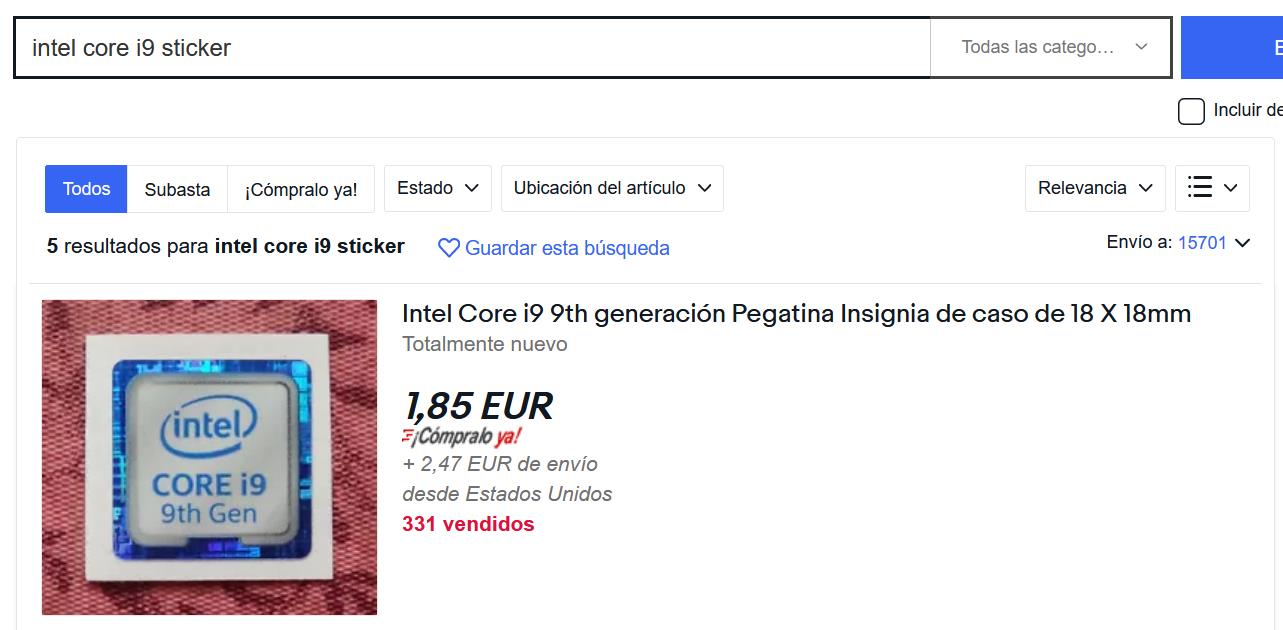 Now how do we satisfy both positions? For the former, we must remember that many stickers are usually sold on eBay to replace in the event that they are detached from our equipment. You just have to search for “sticker” or “insignia” or “sticker” of the product you are looking for.
Now how do we satisfy both positions? For the former, we must remember that many stickers are usually sold on eBay to replace in the event that they are detached from our equipment. You just have to search for “sticker” or “insignia” or “sticker” of the product you are looking for.
In the second case, it is clear that you can remove the stickers from the laptop, but the point is that it is not that simple. The glue they use is usually very strong, and removing the sticker will leave residues that are difficult to remove, something that is obviously much worse than having the sticker there.
 One of the most reliable sticker removal methods is the application of heat, either with a heat gun or a hair dryer. It is a matter of heating the sticker for about 1 minute, and it should now be possible to remove the sticker without glue. Be very careful not to damage the laptop.
One of the most reliable sticker removal methods is the application of heat, either with a heat gun or a hair dryer. It is a matter of heating the sticker for about 1 minute, and it should now be possible to remove the sticker without glue. Be very careful not to damage the laptop.
Whichever method you use, remember that not damaging the laptop should be the top priority, and that you have to be very careful with the products you use.
Final words and conclusion on laptop stickers
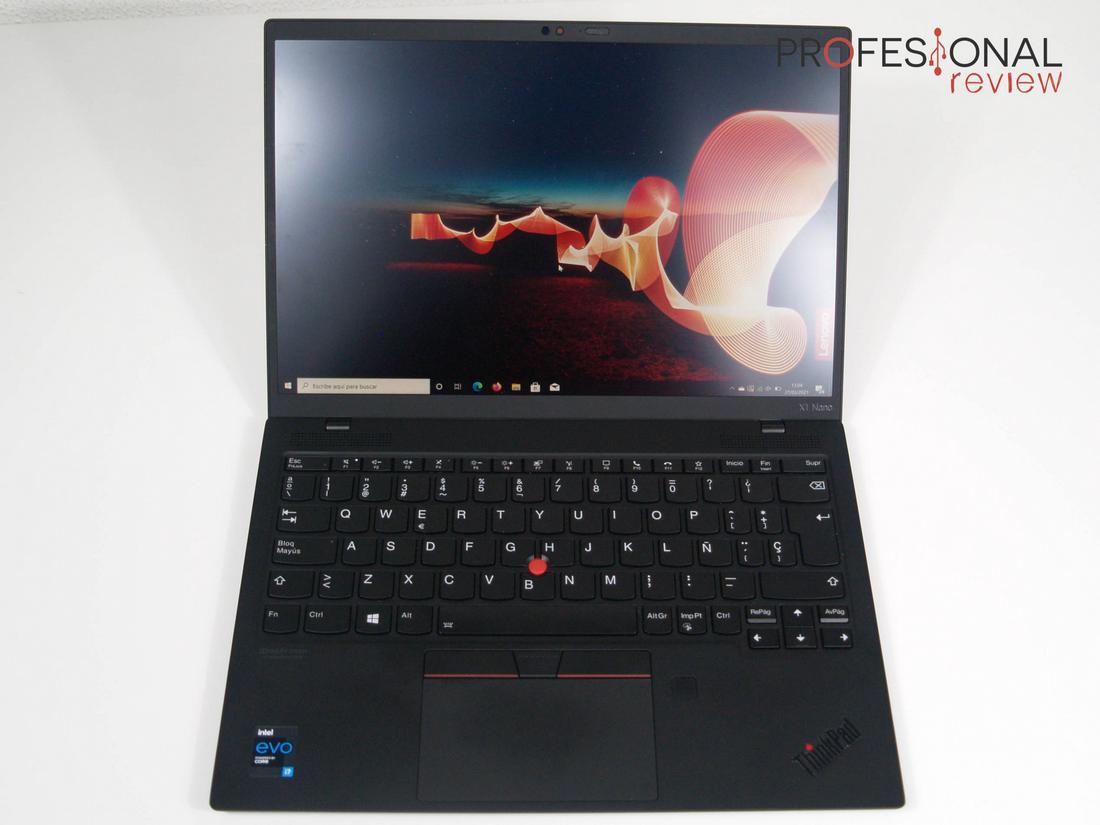 The stickers are one of the most distinctive visual elements of a laptop. We all come to mind the different badges of Intel, AMD, NVIDIA and other companies that we find in almost any notebook, specifically to the left or right of the trackpad. What are they doing there?
The stickers are one of the most distinctive visual elements of a laptop. We all come to mind the different badges of Intel, AMD, NVIDIA and other companies that we find in almost any notebook, specifically to the left or right of the trackpad. What are they doing there?
The easy and obvious answer is to say that they allow you to identify the type of parts that the equipment uses. Thus, we can know from which manufacturer and family the computer’s processor is (Intel Core i7, i3, AMD Ryzen 7, etc.) and if it has a dedicated graphics card (NVIDIA GeForce RTX, AMD Radeon RX…), among other things.
In fact, we can even know more or less well what year the PC is based on the design of the stickers, and that is why we have created and shown in the article a chronology of stickers used by Intel in recent years.
We recommend reading our articles on laptops:
- How to maintain a laptop
- Small laptop – a great little solution for those on the go
- Is it better to buy a gaming laptop for graphic design? Pros and cons
- The history of gaming laptops, how have they evolved?
If anything, we have not yet covered the true compelling reason for wearing these badges. It is mainly a question of marketing. CPU and GPU manufacturers offer discounts to brands in exchange for leaving the stickers on their laptops, and even pay them a portion of the advertising in exchange for displaying them. If we add to this the feeling of trust that it gives the consumer, we conclude that they are an element that brands should very well maintain.
It’s no coincidence that most stickerless laptops are expensive and premium equipment like Apple MacBooks or Microsoft Surface, where brands are trying to give the laptop more personality, and removing stickers is a very good way to achieve this.
Finally, we remember that there are stickers like Intel Evo that require improvements in laptops to be able to use them. Thus, a standard is established that offers great added value to users.
Do the stickers on your laptop bother you, or do you consider them an aesthetically pleasing and useful element? Leave us your comments!


